
On March 2nd, 2023, the top international academic journal Nature published the research findings from the team led by Prof. Xingyi HUANG. Their work, titled “Ladderphane copolymers for high temperature capacitive energy storage” features co-corresponding authors Prof. Xingyi HUANG and Prof. Qing WANG. The paper also lists Research Assistant Jie CHEN, Dr. Yao ZHOU and Prof. Xingyi HUANG as co-first author. Shanghai Jiao Tong University(SJTU) is the first affiliation. The relevant invention patent applied by Prof. Xingyi HUANG and Dr. Jie CHEN has been granted.
Polymers constitute a vital category within dielectric materials. Nevertheless, polymeric materials typically exhibit poor thermal conductivity, and enhancing their thermal conductivity frequently entails sacrificing their insulating properties. The coexistence of these seemingly contradictory properties is one of the bottlenecks limiting the development of polymer materials in advanced electrical and electronic equipment. By constructing highly ordered arrays with high-electron-affinity units, the ladderphane copolymers exhibit more than one order of magnitude lower electrical conductivity than the existing polymers at high electric fields and elevated temperatures, resolving the contradiction between thermal conductivity and insulation. The ladderphane copolymers possess an intrinsic through-plane thermal conductivity of 1.96 ± 0.06 W/(mK), outperforming the existing dielectric polymers and composites, and a discharged energy density of 5.34 J/cm3 with a charge–discharge efficiency of 90% at 200 ℃. After 50,000 charge-discharge cycles, the energy storage is still stable and has good breakdown self-healing, which is very promising in electromagnetic energy equipment, new energy vehicles, power electronics and other fields.
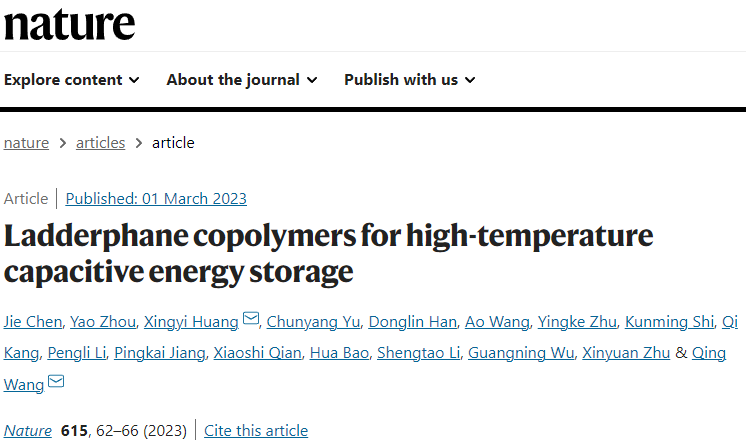
Polymer dielectric film capacitors have a very high energy conversion rate and play a vital role in electromagnetic energy equipment, power electronics and new energy equipment. As equipment and devices develop in the direction of compactness, light weight and extreme working environment, the energy storage density of polymer dielectric films and their high temperature resistance are increasingly required. The charge storage density is proportional to the square of the electric field strength; therefore, the charge storage density increases rapidly as the electric field endured by the dielectric film increases. However, polymer films are dominated by electronic conductivity at high electric fields, which no longer conform to Ohm's law, and the conductivity current increases exponentially with increasing electric field strength, which generates a large amount of Joule heat. The thermal conductivity of conventional polymer dielectrics is generally low (< 0.2 W/(mK)), and the heat dissipation efficiency is very low, which will cause a rapid increase in dielectric temperature, which in turn will cause a chain reaction of exponential increase in conductivity and rapid decrease in electrical strength, thus causing serious problems such as device and equipment failure, and the heat dissipation problem is especially prominent in devices and equipment working at high temperatures. Although the thermal conductivity of polymer dielectrics can be increased by introducing nano-addition, this is often at the expense of electrical strength, and more importantly, nano-addition poses a great challenge to the film fabrication process. Therefore, the development of high temperature resistant, intrinsically high thermally conductive polymer dielectric films is the best option.
Prof. Xingyi HUANG’s group designed and synthesized a class of ladderphane poly[N-4-aminophenyl sulfuryl-bis(norbornene pyrrolidine)] (PSBNP) and its copolymer PSBNP-co-PTNI with high-electron-affinity poly(N-4-aminophenyl trifluoroethyl-norbornene imide) (PTNI) , which self-assembled into highly ordered arrays by π–π stacking interactions. Polarized Raman spectroscopy shows that the polarized signal of the copolymer film is isotropic on the flat surface and anisotropic on the fractured surface, denoting that the ordered arrays are oriented parallel to the surfaces. Thus, the dielectric film exhibits a high thermal conductivity of 1.96 ± 0.06 W/(mK) in the vertical plane direction.
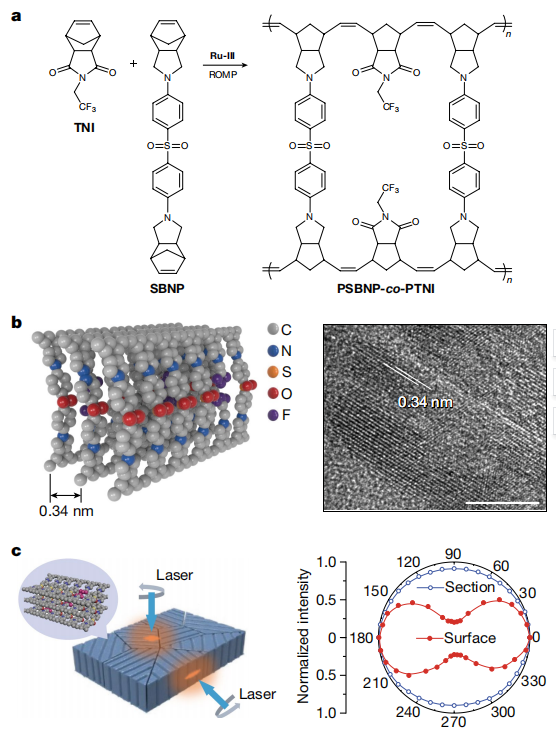
Fig. 1: Chemical structure and self-assembled morphology.
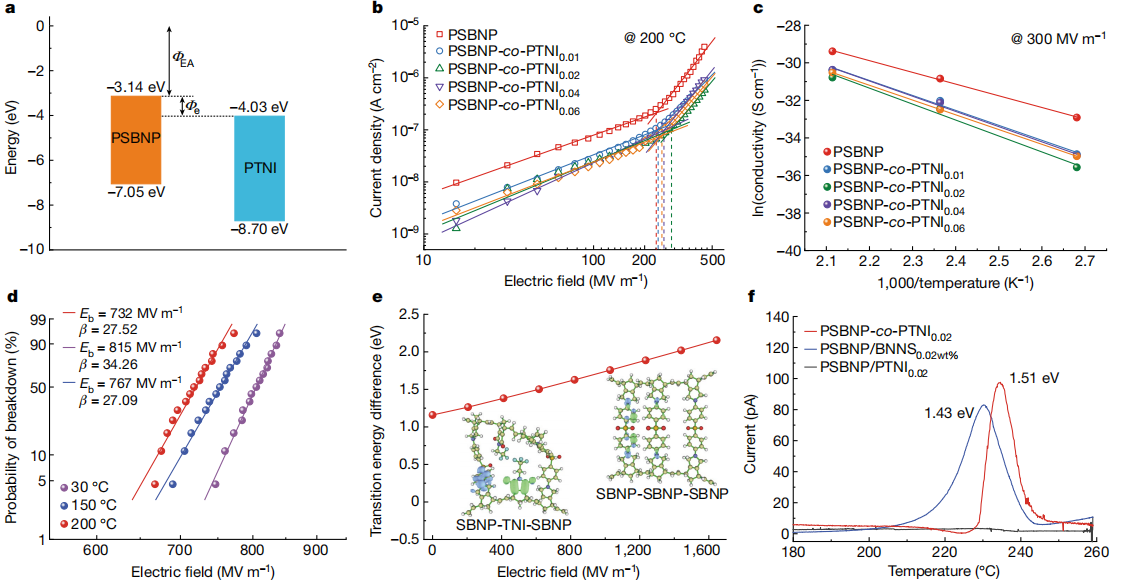
Fig. 2: Electrical conduction and dielectric breakdown.
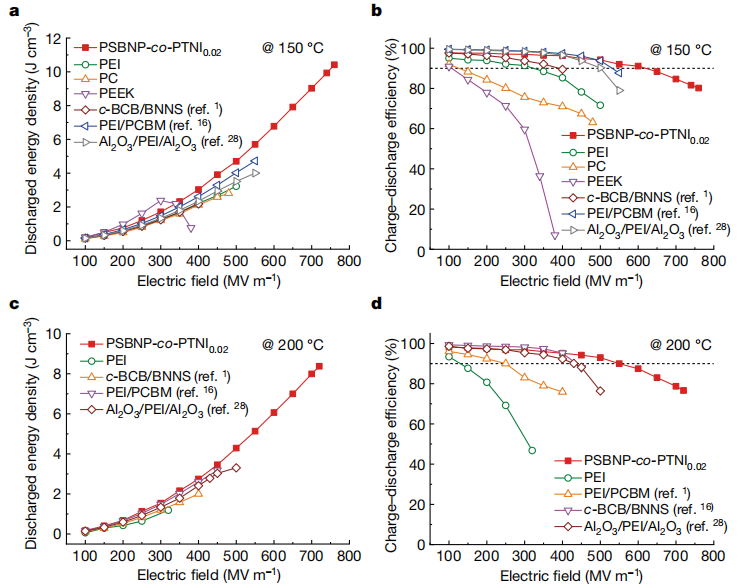
Fig. 3: Capacitive energy storage performance.
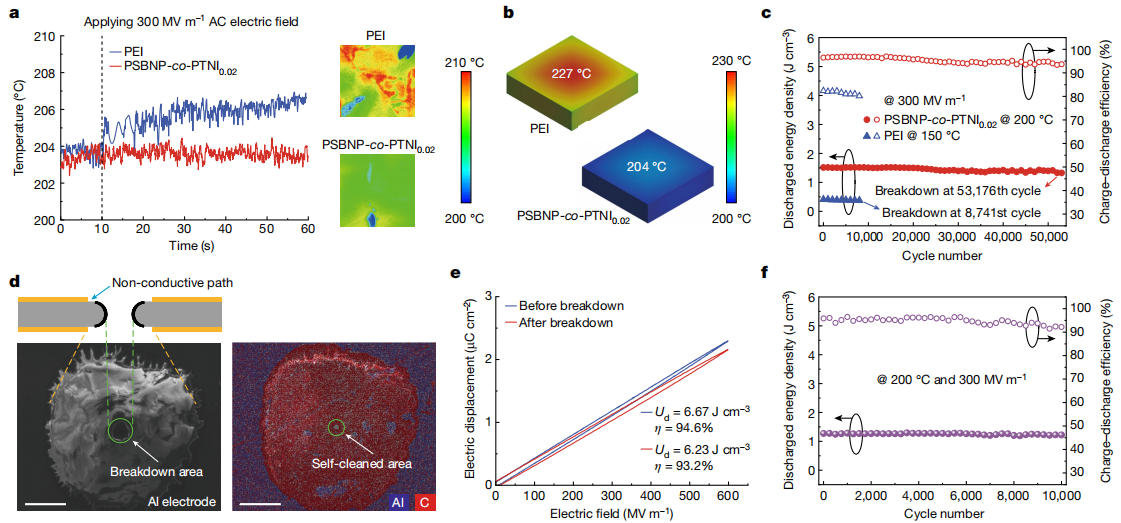
Fig. 4: Internal temperature, cyclic stability and self-healing.
This research is a deep cross-fertilization of multiple disciplines such as electrical engineering, chemistry, materials, and engineering thermophysics. Prof. Pingkai JIANG, Prof. Xinyuan ZHU, Associate Researcher Chunyang YU, Prof. Xiaoshi QIAN, Prof. Hua BAO from SJTU, Prof. Li TAO from Xi’an Jiao Tong University and Prof. Guangning WU from Southwest Jiao Tong University contributed to this research. This research was financially supported by the National Natural Science Foundation of China (51877132, 52003153, U19A20105, 51522703, 52103303), the Program of Shanghai Academic Research Leader (21XD1401600) and the State Key Laboratory of Electrical Insulation and Power Equipment (EIPE20203, EIPE21206).
Link to original article: https://www.nature.com/articles/s41586-022-05671-4
Translator: Chenyun SUN
Prev:None
Address:800 Dongchuan RD. Minhang District, Shanghai, China
PostCode:200240 Tel:021-54742893 E-mail:sjtuscce@sjtu.edu.cn

Copyright@ 2023. All rights reserved. Powered by SCCE ICP:2010917